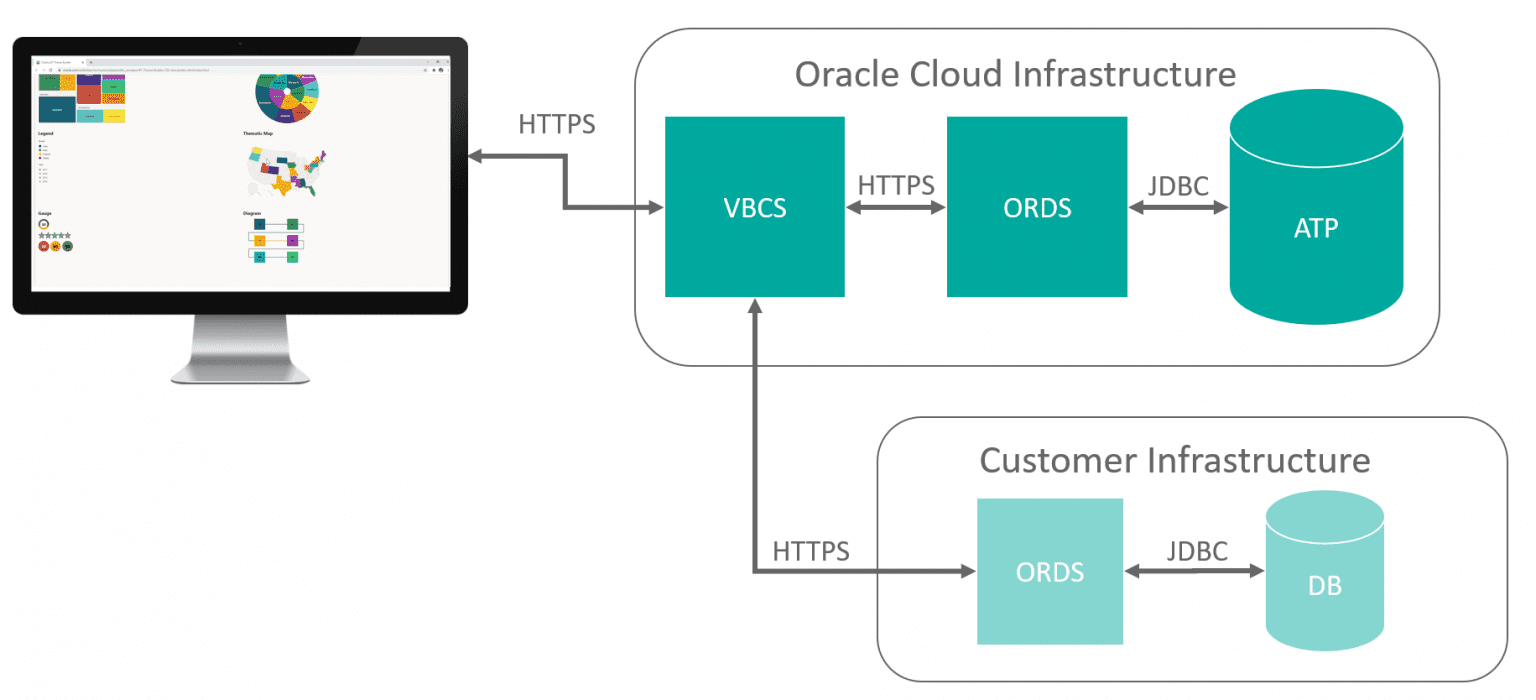
Oracle APEX vs. Oracle VBCS: Comparison of the two front-end technologies / Part 1

Oracle Application Express (APEX) and Oracle Visual Builder Cloud Service (VBCS) are two low-code platforms by Oracle that can both be used for creating web applications. But what are the differences and similarities between the two front-end technologies? In this two-part blog series, we want to get to the bottom of this question. First, Oracle APEX and Oracle VBCS will be introduced. In the second part, we will compare the two technologies according to different categories.
What is Oracle APEX?
Oracle APEX is a low code platform by Oracle that helps create web applications on the Oracle Database using SQL, PL/SQL, JavaScript and HTML. APEX itself is part of any Oracle Database and can be used without any additional license costs. APEX has been around for a very long time: its success story began in 2004 with the first release, then called HTML-DB. Over the years, new features were added, such as the Interactive Report (2008), Dynamic Actions (2010) or the Interactive Grid (2017). With the help of Interactive Reports, the data that is read from the database via query in the front end can – as is similarly possible in Excel – be filtered, sorted, and even colored based on rules. Dynamic Actions enable the developer to program JavaScript actions declaratively and execute Ajax calls to the database. The Interactive Grid is a further development of the Interactive Report, and is capable of displaying as well as manipulating data. At present, APEX is available in version 20.2. Since version 5.1, APEX has increasingly been relying on Oracle JET, an open source toolkit for JavaScript development.

Timeline Oracle APEX
APEX is based on a three-tier architecture. HTTP requests are sent from the client, in this case the browser, to the database via the Oracle Rest Data Service. The responses are sent back to the browser vice versa. Here, data queries and manipulations are executed directly in the database.
With Oracle APEX, it is therefore easy to create database-related web applications. It is also possible to create Excel-like evaluations on data of the database. Furthermore, extensions of standard applications – like the Oracle E-Business Suite – can be created easily.
What is Oracle VBCS?
Oracle VBCS is a relatively new low code platform from Oracle. Oracle VBCS is based on REST services, JavaScript and HTML5. For JavaScript, as is the case for APEX, the framework JET is used, which is 100% integrated into VBCS. Development and runtime are located in the cloud. Oracle VBCS must be licensed via Universal Credits.
Oracle JET comes with a number of ready-made components such as tables, lists, toolbars and the like. These can be used in VBCS to implement responsive web applications. The data that is to be displayed needs to be provided in the form of REST services. Databases or files cannot be accessed directly. Oracle VBCS is usually operated together with an autonomous database and an ORDS. In order to access data from other data sources, these need to be made available via REST services.

Architecture Oracle VBCS
With the help of Oracle VBCS, web applications can be quickly created, debugged and tested. In addition, it is possible to almost seamlessly extend Oracle Software as a Service (SaaS) products such as Oracle Fusion HCM Cloud. Displaying and manipulating data is quickly implemented as well. With the help of Oracle VBCS, responsive web apps as well as Progress Web Apps (PWA) can be easily implemented.
To gain a better understanding of what an application looks like with APEX or VBCS, a simple application was each created in both technologies. This application displays the data of a table with 3 columns (ID, talk and date), and new records can be added. In APEX, this was solved with an Interactive Grid, in VBCS it was realized with a table containing a form.
Example in VBCS:

Display of records in VBCS

Creating a new record in VBCS
Example in APEX:

Display and editing screen in APEX
In the second part of this blog series, Oracle APEX and Oracle VBCS are contrasted and compared in seven different categories.
